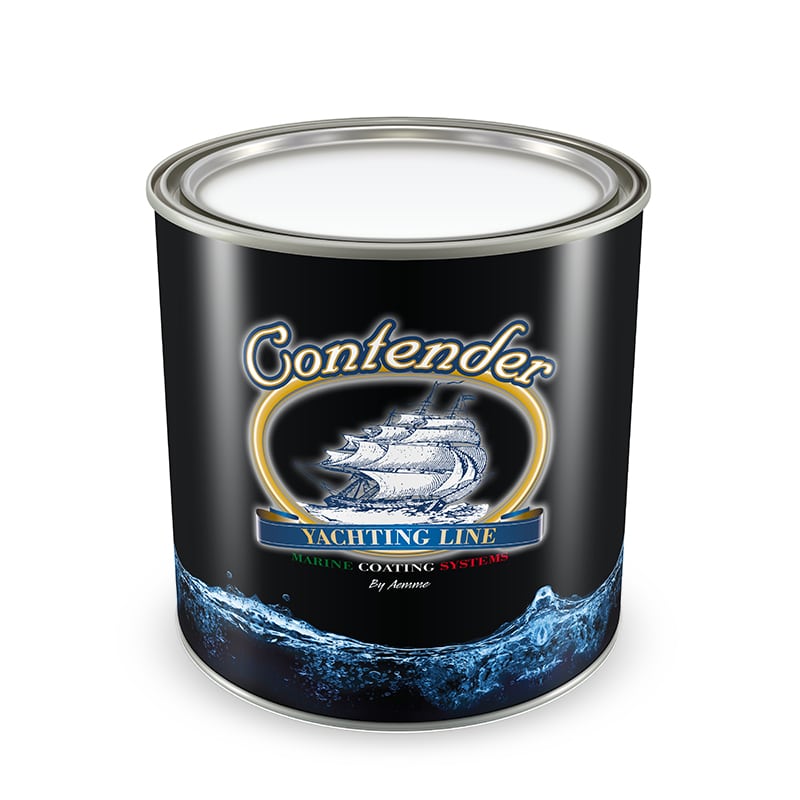Description
SURFACE PREPARATION AND APPLICATION PROCEDURE
Bare Steel bottom. Apply 1 coat of EPOFOND AM-9 on sandblasted steel according to SA 2,5 and let dry for 12-24 hours. (If sandblasting is not possible proceed with mechanical cleaning to bring the surface to bare steel, apply 1 coat of EVIOX CROMOMINIO and let dry for 8-12 hours.) Apply then 2 coats of SOLVER PRIMER allowing 24 hours between coats. Overcoat then with 2 coats of CONTENDER antifouling allowing min.8 hours between coats.
Bare Wood bottom. Apply one coat of EVIOX CROMOMINIO and allow to dry for 8-12 hours. Apply 2 coats of SOLVER PRIMER allowing 24 hours between coats followed by 2 coats of CONTENDER antifouling allowing min. 8 hours between coats.
Previously coated bottom. If the old antifouling is still in sound conditions, compatible, and well sticked on the substrate, it is enough to apply 1-2 coats of SOLVER PRIMER followed by 2 coats of CONTENDER antifouling, allowing the required waiting time between coats.
Fibreglass bottom. Degrease with suitable cleaner and rinse with water the surface to be coated. Sand with fine abrasive paper and remove dust. Apply 1 coat of POLIFIBER PRIMER and after 24 hours sand with fine abrasive paper. Apply then 2 coats of CONTENDER antifouling allowing min.8 hours between coats.
N.B. as an alternative to POLIFIBER it is possible to use EPOFOND AM9 in the same conditions.
Recommendations. After the application of the last coat the maximum launching period of the antifouling is 1 month; with top quality copper based antifouling and after agreement with our technical staff, the launching time may extend up to 3 months, providing that the hull is protected from moisture, rain or atmospheric agents with plastic cover or similar material.
| Application | Brush-Roller-Spray |
| Brush-Roller | Ready to use or with max 5% Thinner 400 |
| Spray | 5-8% Thinner 400 |
| Touch dry | 2-3 hours |
| Launching time | Min 24-48 hours |
| Recoat time | Min. 8 h (20°C) |
| Application temperature | Between +10 C and +40 C |
| Relevant humidity | Less than 80% |
| Dry film thickness advised | 60-90 microns per mano |
| Theoret. coverage m2/Lt | 5-8 |






